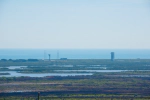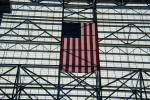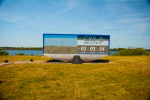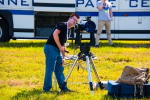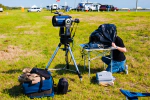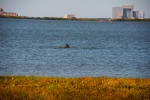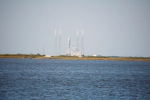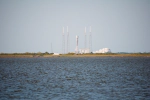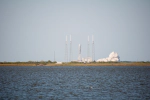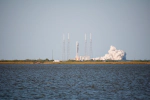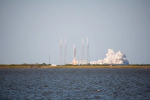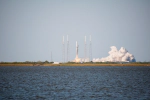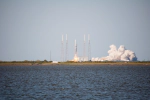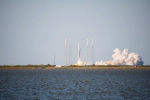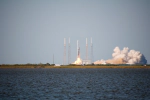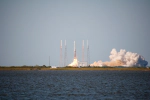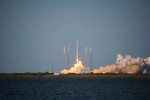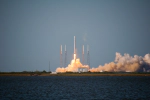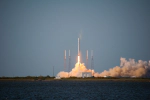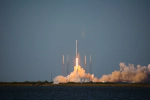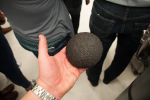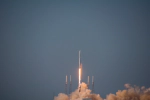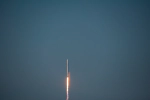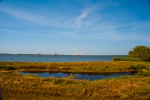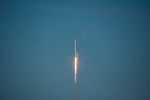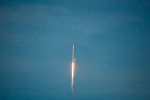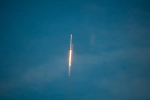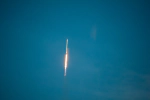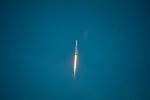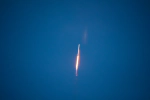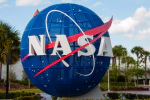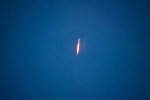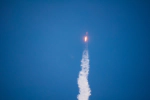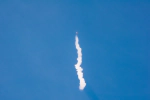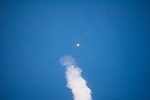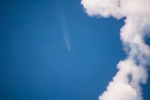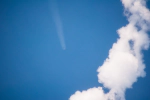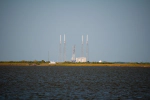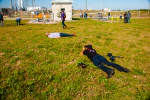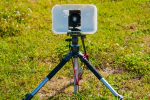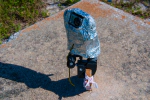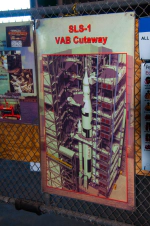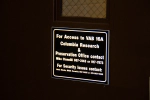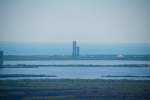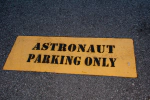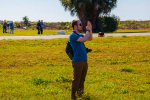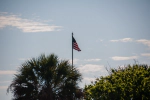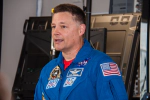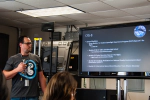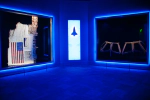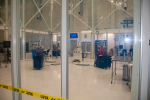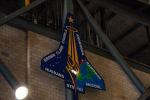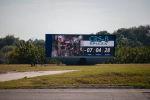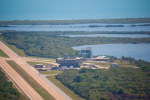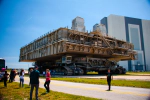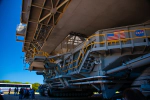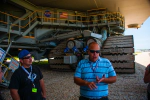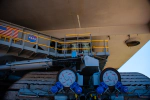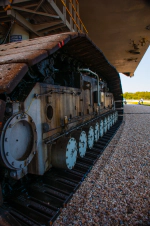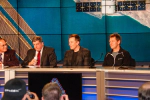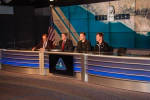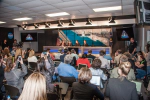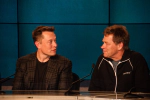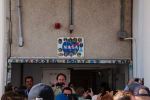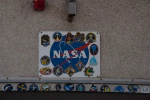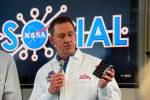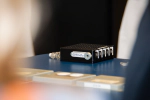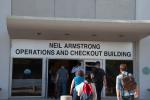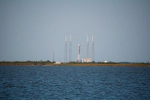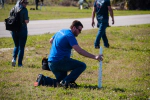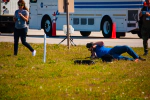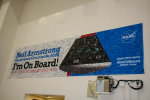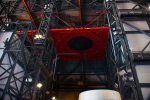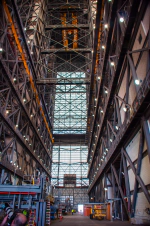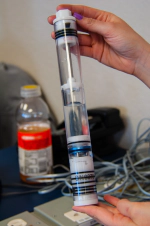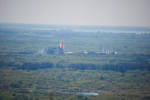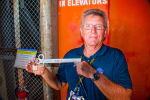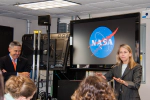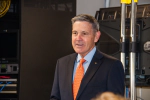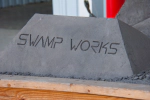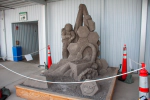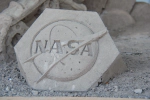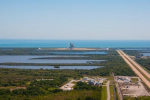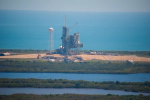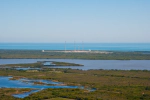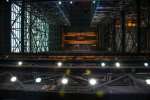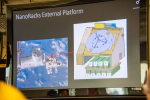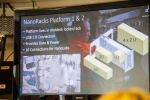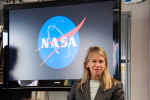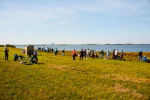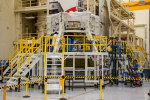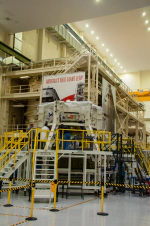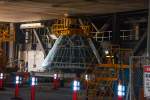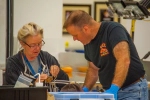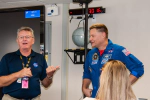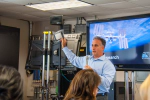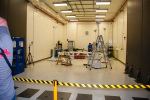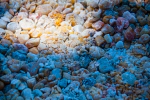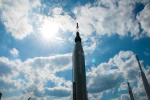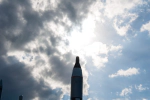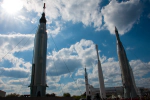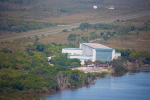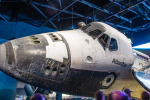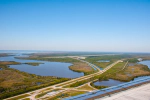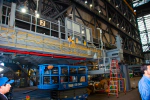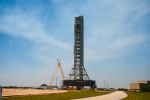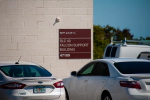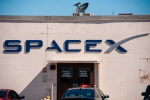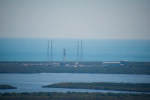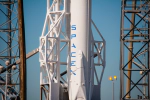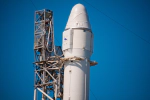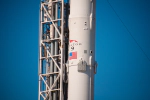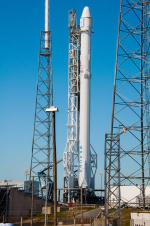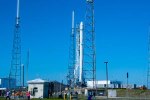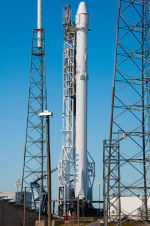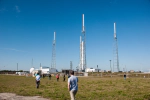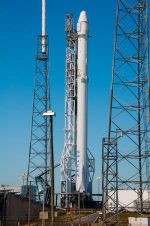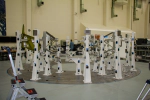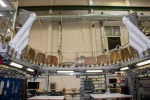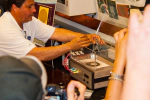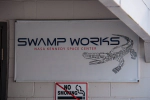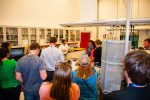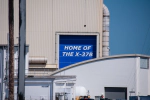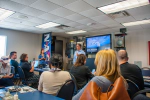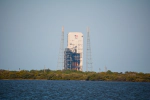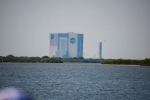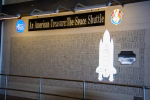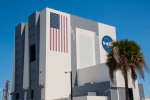Recently I had the incredible opportunity to attend the 8th NASA Social event which culminated with the launch of the eighth Cargo Resupply Mission (CRS-8) conducted by SpaceX, referred to as SpaceX CRS-8, at the Kennedy Space Center (KSC) in Cape Canaveral, FL. We got access to behind the scenes, restricted access to various areas, briefings from NASA scientists, the KSC Director, the NASA Deputy Administrator, payload specialists, an astronaut, watched the launch from 2 miles away and attend the post mission press briefing.
The big news out of this launch is that SpaceX was able to land their Falcon9 rocket first stage on the drone ship in the ocean. This is important because at least half of the missions will require ocean-landings vs. land-landings. Why? Because on missions to the International Space Station (ISS), the payload must catch up to ISS orbiting the earth 249 miles up at 17,150 mph and therefore the rocket must start to fly horizontal to pickup speed. The rocket can’t hold enough fuel to zero out the horizontal velocity and do a 180 to return back to the launch site (return-to-launch-site, aka RTLS). Thus drone ship landings in the Atlantic need to happen.
The media has done a great job of covering the landing aspect of this so I won’t echo it here, rather in this post I detail what I saw and share my experience. If you want to see some of the landing pictures and video, I recommend checking out SpaceX on YouTube & Flickr:
- SpaceX on Flickr: https://flickr.com/spacex
- SpaceX on YouTube: https://www.youtube.com/user/spacexchannel
- My NASA Social CRS-9 Pictures (scroll to bottom of the post for all pictures)
What is NASA Social?
NASA has a shoestring social media budget. There are a handful of people who manage their social media properties on Facebook, Twitter @NASASocial / #NASASocial, Periscope @NASASocial and Snapchat. Periodically they hold an event (mine was 2 days at Kennedy Space Center) where those who participate in social media can apply to be one of a few people (my group had 50 spots). You must be 18yrs old and either a US Citizen or permanent US resident. If accepted you cover all your expenses to attend and are given similar access that the regular press is provided. In addition you go on a bunch of tours and sit through various briefings. I found out I was accepted about 10 days prior to the start of the event.
So let’s get onto what my visit was like. I’m going to run through this in sequential order…
We first started with introductions on the NASA side and all the people in our group. NASA created a list of everyone in the group on Twitter, SpaceX 8 NASA Social. We had some interesting folks from familiar organizations like Flipboard, Product Hunt & Accuweather.
Orion
After introductions we got to go in the high bay (a huge room where construction happens) clean room where they are working on Orion. Orion is a capsule that will sit atop the Space Launch System (SLS) rocket for next generation missions. Orion first flew, unmanned, in December 2014 on a test flight aboard a Delta 4 Heavy. The next flight will be at the end of 2018 atop SLS, unmanned, in a mission around the moon. You can think of Orion as the successor to the Apollo program.
We got to see the process of the atmosphere container being mounted to the support structure that will be placed inside Orion.
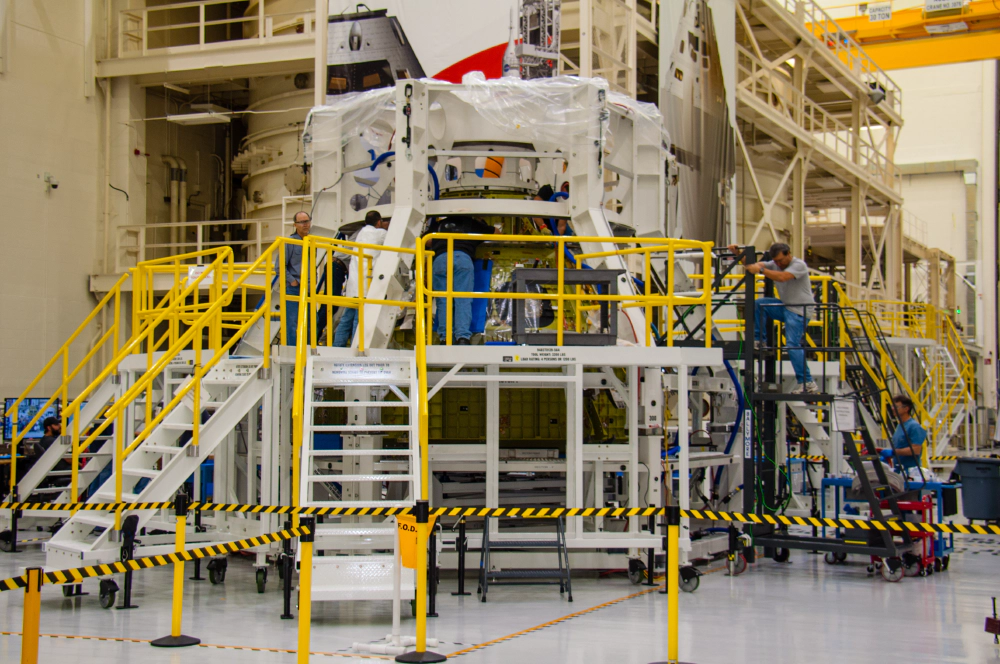
Orion - Mounting atmosphere container to support structure
Previously most things were manufactured off-site, which caused challenges and delays when things didn’t fit just right. here we saw a change with Orion where the wiring harnesses were being created to spec right next to the actual capsule while they were drilling the holes in the support structure for the wiring harnesses.
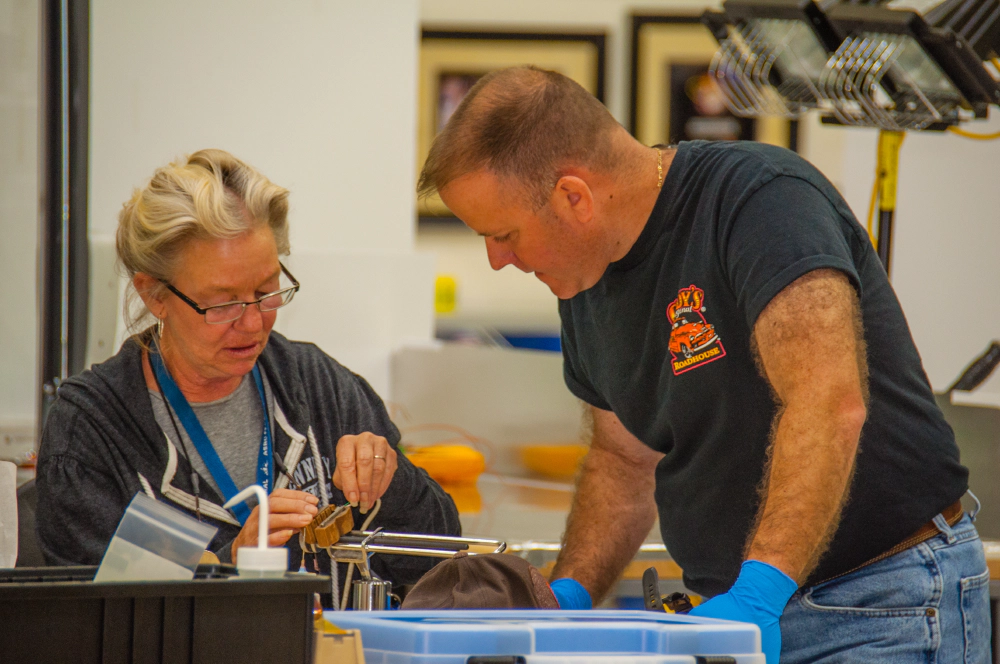
Orion Wiring Harness Manufacturing
Science Briefing
Next we headed to the News Annex for a science briefing. I had expected the entire NASA Social event to be about manufacturing, launch ops, etc, but was thrilled to find out that we were getting a detailed science briefing. During this time we heard from various scientists and specialists who talks about the payload that loaded into Dragon headed for ISS on this mission.
ISS Research
First we heard from ISS Research, the official source for research & science from ISS. One of the big take-aways I got from her chat is how the body is impacted by microgravity on ISS. Astronauts exercise 2.5 hours per day aboard ISS to battle the affects of microgravity. When in microgravity, fluid moves from your legs up to your torso, giving you a bloated sensation. It also affects your eyes as fluid also moves into your head, increasing the pressure on your eyes and affecting your vision. To address this astronauts now wear a special suit on their lower extremities that sucks fluid back down into the legs.
In addition it also puts some pressure on the skin. When we’re on earth, our skin is used to the touch of a shirt hanging on us. However when in microgravity, even though minor, there’s no force on your skin as shirts (and other clothing garments) are floating on you. The affect is that when you return to earth, the nerves on your skin feel like they are on fire when you wear a shirt as your body isn’t used to it… crazy!
NASA Scientist Trent Smith

Plant pillow used to grow lettuce on ISS
Up next was NASA Scientist Trent Smith who focused on talking about food onboard ISS, specifically growing things in microgravity (more info on the experiment here). This is important because a mission to Mars involves a 9-month journey (one way, so 18-month roundtrip) plus time on the planet and thus, it would make sense to grow your own food. At present ISS is focused on “pick-and-eat” foods such as lettuce or white potatoes. They don’t have a microwave yet because the shielding required for the device would take up way too much space at this time. Recently they’ve grown lettuce & flowers in microgravity.
One challenge they face is how to grow the lettuce exclusively in microgravity; they want to make sure the entire process happens in microgravity and not while packed up and waiting for launch while on earth. Not to mention the challenge with watering the plants onboard ISS. To do this they have created plant pillows which is what you see him holding up in the picture above. This contains the lettuce seed in a substrate which is like inorganic soil. The astronauts can inject water & fertilizer into the pillow to trigger the germination process. Mr. Smith also discussed how they were working to figure out the best “space dirt” to use for the substrate to see how the coarseness & gain size affect how the plant roots grow as well as the most effective use of the volume they have. Up next are things like tomatoes, peppers, radishes and possibly white potatoes.
Dr. Carl Carruthers from NanoRacks
Next up was a presentation by Dr. Carl Carruthers, chief scientist of NanoRacks. This company has developed multiple modular systems to conduct science experiments. These make it very easy to send up new experiments for the astronauts on ISS to conduct. The NanoRacks Platform 2 & Platform 3 have a standardized system where you can rent different sized modules. Each module can be connected via USB to a main rail that supplies power & data via a standard USB3 connect (or USB2 on Platform 2)
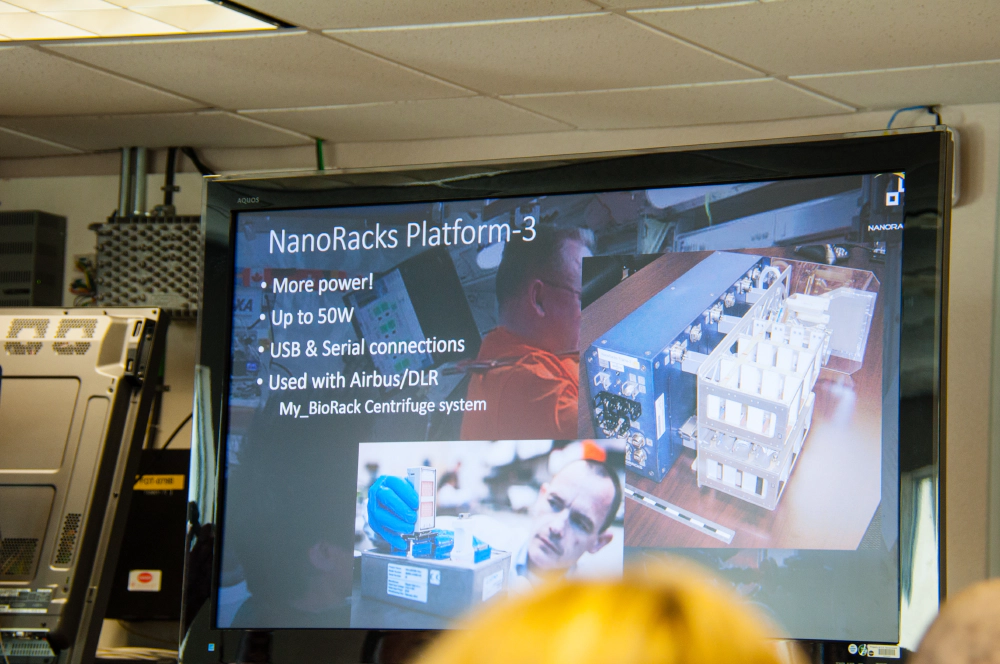
NanoRacks v3 modular experiment system
They also have external systems, External Platform & Smallsat Deployment that allows for experiments launched from outside the space station.
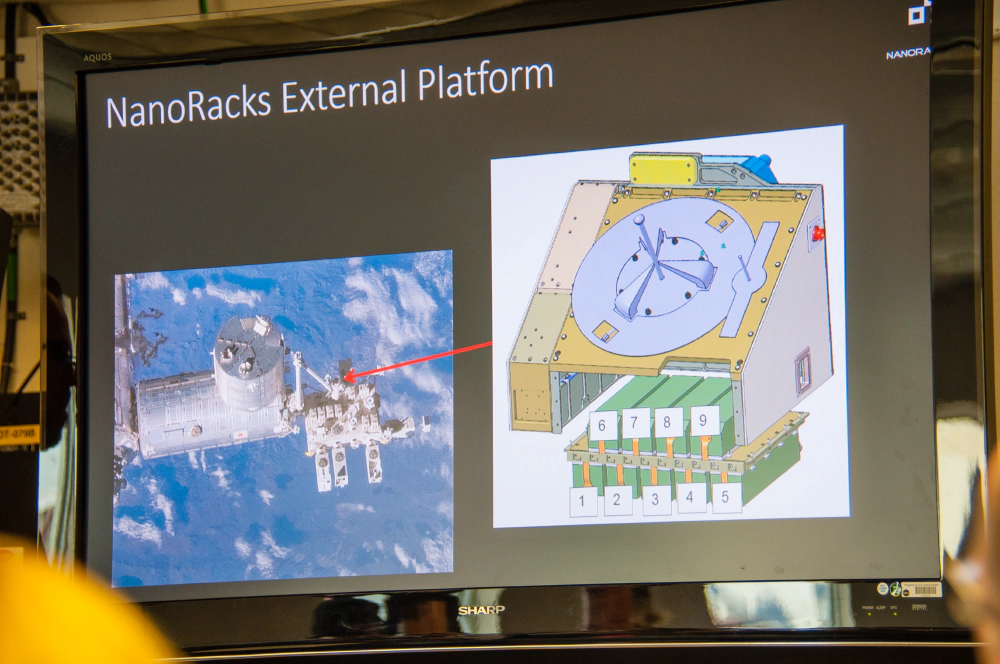
NanoRacks external modular experiment system
Dr. Carruthers shared that NanoRacks is funded 90% by investors and only 10% by NASA. Their systems can be delivered using SpaceX’s Dragon or Orbital’s Cygnus spacecrafts and can take advantage of very late load times so experiments can get tweaked & set up at the very last minute before they need to be deployed. What I found interesting about this was that anyone could develop their own experiment that you then provide NanoRacks and they handle all the work with NASA and the delivery contractor (SpaceX / ULA) to deploy the it. Makes it so easy!
Eli Lilly
We were then joined by two scientists from Eli Lilly. They shared that they were sending up an experiment that would grow crystals in microgravity to see if that environment will grow bigger and at a faster rate than what we can do on earth. The impact of this is that it can help speed the research & development of new medicines and clinical trials.
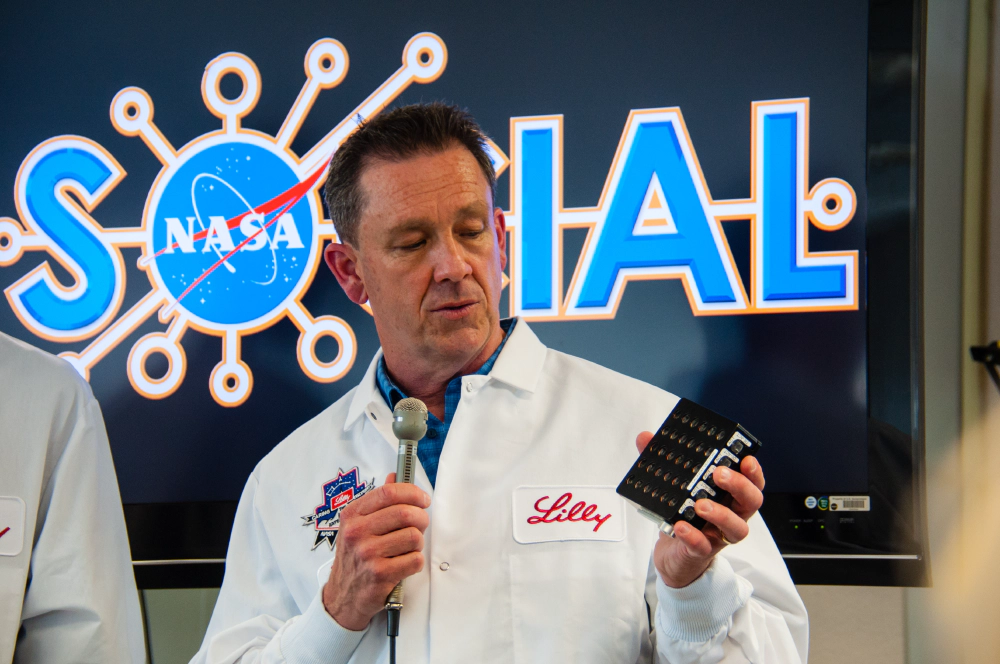
Eli Lilly Microgravity Crystal Growing System
They showed the device, the black box in the picture above, that will be used to start the experiment. It’s designed to be turned on to grow 25+ crystals and als turn it off so they are only grown while in microgravity and not once stored onboard Dragon for flight to ISS or on the return flight. They will do the same test on the ground at the same time for a good control set to compare against.
Anna-Sophia Boguraev
This presentation blew everyone away. This is a high-school senior who had the winning experiment for the Genes in Space 2015 competition. Instead of paraphrasing, I’ll quote the exact description of her experiment:
While in space, astronauts suffer from a depressed immune system. The 2015 Genes in Space Winner, Anna-Sophia Boguraev, hypothesized that epigenetic regulation is at play. That is, unique environmental factors aboard the International Space Station (e.g. microgravity and radiation) may be triggering physical modifications to the DNA of astronauts, which in turn may switch off genes that are important for normal immune function. Epigenetic changes act like genetic switches, resulting in changes to gene expression rather than modifications to the genetic code itself. Anna-Sophia is exploring whether there is a link between epigenetic changes to DNA and a weakened immune system in astronauts.
We were all blown away by how mature & rock solid presentation this young lady was. I’ll go so far as to say she might have had the more impressive presentation to us. She explained in detail how she came up with her experiment and what the possible benefits are of her research. A high-school senior!
BEAM
The last presentation was by Lisa from Bigelow. The featured payload on Dragon for CRS-8 was the Bigelow Expandable Activity Module or BEAM. BEAM is an expandable habitat that, when packed, is only 3 feet in diameter but when expanded will increase it’s volume 10x to 565 cubit feet, 10.5 feet in diameter & 13 feet long. This could yield not only cheaper & larger expansions for ISS but possibly in the future, imagine multiple BEAM’s installed together to create another experiment habitat in addition to ISS!
Swamp Works
It was quite a surprise to find out we were getting to go to Swamp Works!!!
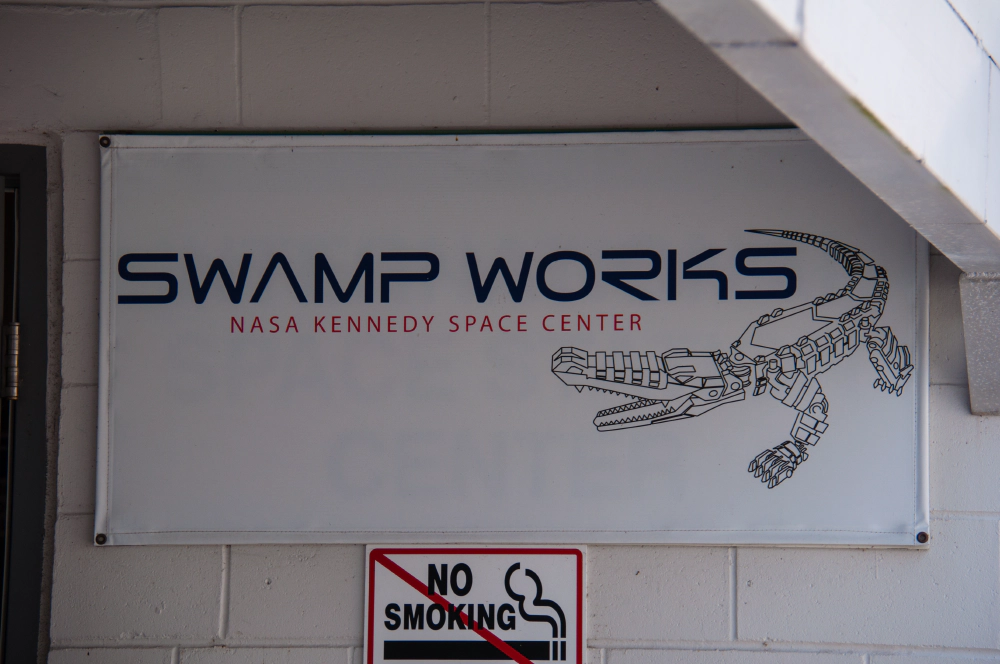
Swamp works!
Think of this as the advanced research & development arm of NASA. Housed in the original building for the Apollo program (talk about the history just walking through the doors!), we were taken on two different tours; one where we could take pictures and one where we couldn’t.
There were a few very interesting experiments going on. First, dust was a major problem during the Apollo lunar missions & it’s expected to be an issue with the Mars missions. They are developing this film that when energized it will repel dust as you can see from the following picture. Note the white circle. That’s the energized area and he is sprinkling dust in the picture. You can see how the dust is pushed to the outside fo the ring. I want this on my solar panels to repel the pollen!
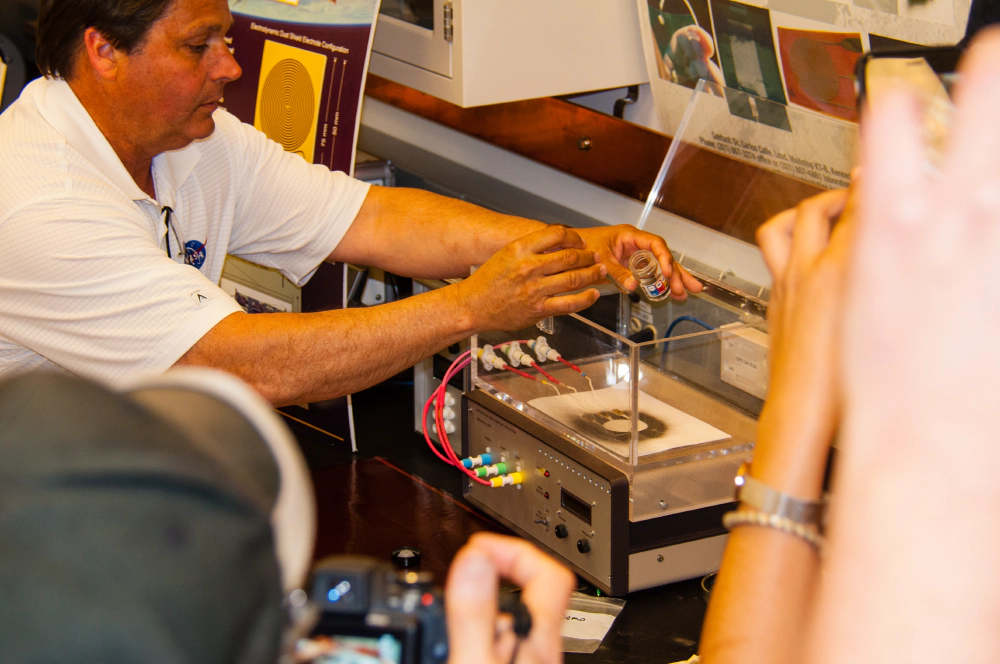
Swamp Works - Dust repellant
Next up they shared their research into graphite based ultracacitors. This is an alternative energy storage technology to our current & popular lithium ion batteries. Graphite is a safer technology that has a better energy density storage characteristic then the other options on the market. In addition it can be charged much faster than lithium ion batteries. Instead of plugging your phone in to charge for an hour, imagine just swiping it over a charge platform for a full & instant charge! I want this for my Tesla! In addition, he showed how they can paint layers of this substance on a surface to provide multiple-level batteries!
The other two experiments in this room were around improvements to the heat shield technology as well as a communication system using LEDs. As they explained, think WiFi (which are radio signals that can travel through walls) but more like LiFi where it’s line of sight and can’t travel through walls which is much more secure!
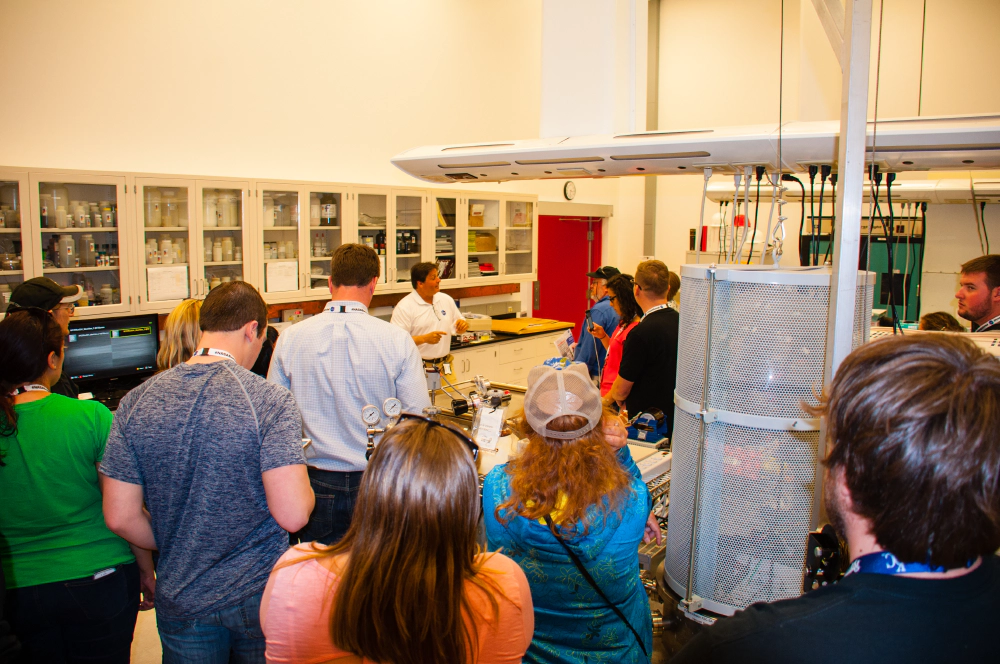
Swamp Works
We then went to another section of Swamp Works where pictures & videos were not allowed. They are doing some very cool stuff in there. For instance they are trying to develop a way to create construction materials (think tiles / cinder blocks) on the lunar or Martian surface. The idea would be to send robots up to create the materials for building landing pads & structures to live in. Landing pads are important because when spacecrafts land / take off, the dust they kick up flies out at 2,000 meters/second and thus, sand blasting everything remotely close.
Our guide also told a funny story where they were trying to find a material that replicated the lunar surface. Just by chance an astronaut stepped on this material in New Mexico, US and said it felt just like the lunar surface. When they analyzed it it was a 95% match to the lunar samples they brought back from the Apollo missions. It was a byproduct of a process this company was doing. NASA asked if they could buy the dust and the company replied “sure, it’s 8/ton”. NASA thought they were getting a great deal at $8,000/ton so they ordered 120 tons for their “moon room”. Ends up the company meant $8/ton so the shipping alone was much more expensive than the dust!
Visitor Center
We finished the day around 4:30p so I headed over to the KSC Visitor Center to pickup some shirts for my kids and see the Atlantis exhibit again. First a quick walk by the rocket garden…

Rocket Garden
And then to see Atlantis. If you are in the area, it’s an incredible sight. Don’t let anyone tell you how you get to see it… you want to experience it first hand as they do a great job showing it off.
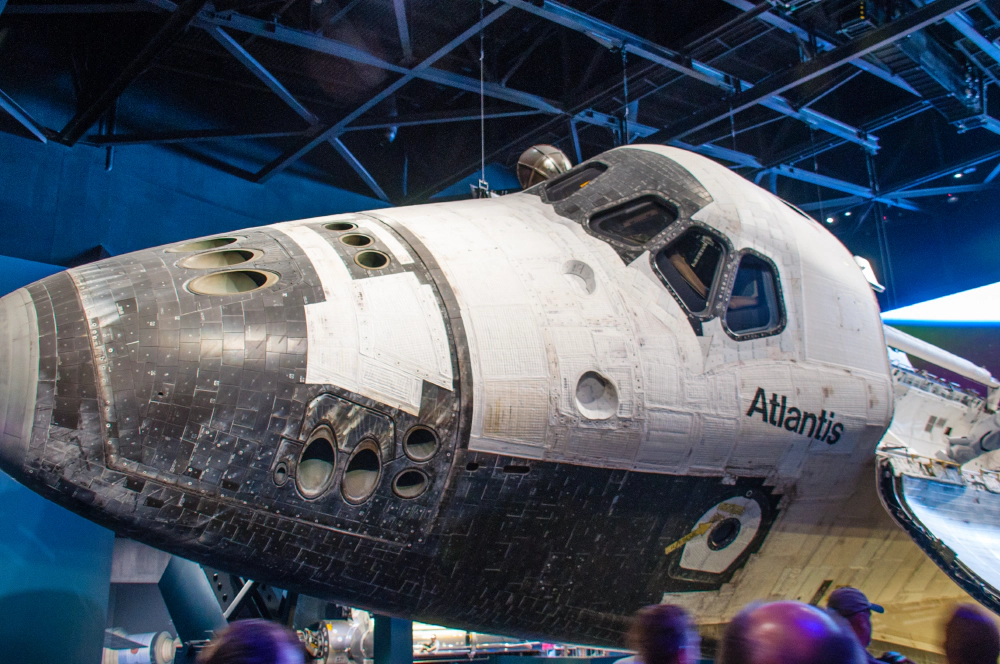
Shuttle Atlantis
While I’d been there a few times before, this was the first time I had a chance to see the memorial for the two lost shuttles Challenger & Columbia. I remember walking to lunch in 4th grade and seeing the news on the TV the Challenger accident. From my school, you could look up in the sky and see the aftermath… still takes me back.

Challenger & Columbia Memorial
In the photo above, on the left is a piece recovered from Challenger & on the right are the cockpit window frames from Columbia.
Robert Cabana, KSC Director & Dava Newman, NASA Deputy Administrator
Friday morning, April 8 (launch day) started with a question/answer session with the Kennedy Space Center director, and former astronaut, Robert Cabana.

KSC Director Robert Cabana & NASA Deputy Administrator Dava Newman
His energy and enthusiasm for space & KSC was so inspiring. He shared plans going on with KSC, said he did believe in extraterrestrial life and encouraged everyone to follow their passion. I asked him one question: What was he most looking forward to at KSC. His answer: (1) the two commercial crew test flights by the end of 2017 & (2) stacking SLS & launching in late 2018. Someone asked what was his inspiration growing up. Without missing a beat he told a story of visiting Washington DC when he was 5yrs old and saw the Spirit of St Louis & Wright Brother’s flier… they captured his imagination and he never let go.
Astronaut Doug Wheeler
We were then joined by astronaut Doug Wheelock who’s been to space four times & lived aboard ISS for 6 months. He answered a lot of questions, but focused primarily on living in microgravity & comparing the Space Shuttle to the Soyuz in going to & returning to ISS. There were a few things that stood out from his time with us that I found interesting:
- Most exciting moment: being outside ISS on a spacewalk.
- When doing a spacewalk, the temps in the sunlight can reach 300F outside the suit, but in the shade of the earth, it can fall to -300F. Spacesuits have cooling systems in them, but no heating. With sunrises & sunsets happening every 45 minutes, they need to endure the cold. Around 2-3 minutes before sunset, mission control warns the astronaut of the upcoming sunset. Typically they shut their cooling off to retain as much heat as possible in the last few minutes to make it through the cold time… wow!
- When returning aboard the shuttle to earth, they entered US airspace over Seattle and 19 minutes later they were landing at Cape Canaveral. It takes me 5.5-6 hours to make the same trip using an airplane!
- Most scary moment: July 31, 2010 @ 11:30pm GMT - pump module failed that caused the loss of half of ISS’ lights, power & life support systems.
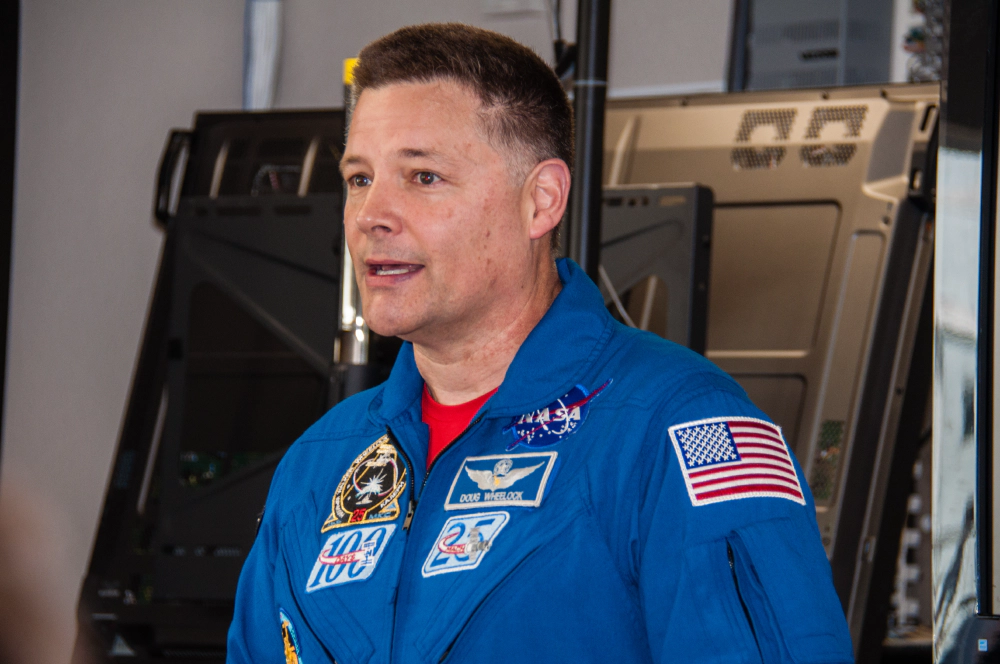
Astronaut Doug Wheeler (@astro_wheels)
Falcon9 Launch Pad Visit
After the briefings we headed out to Launch Complex 40 where SpaceX’s Falcon 9 had been raised. We were given 25 minutes at the pad to check out the rocket and take pictures.
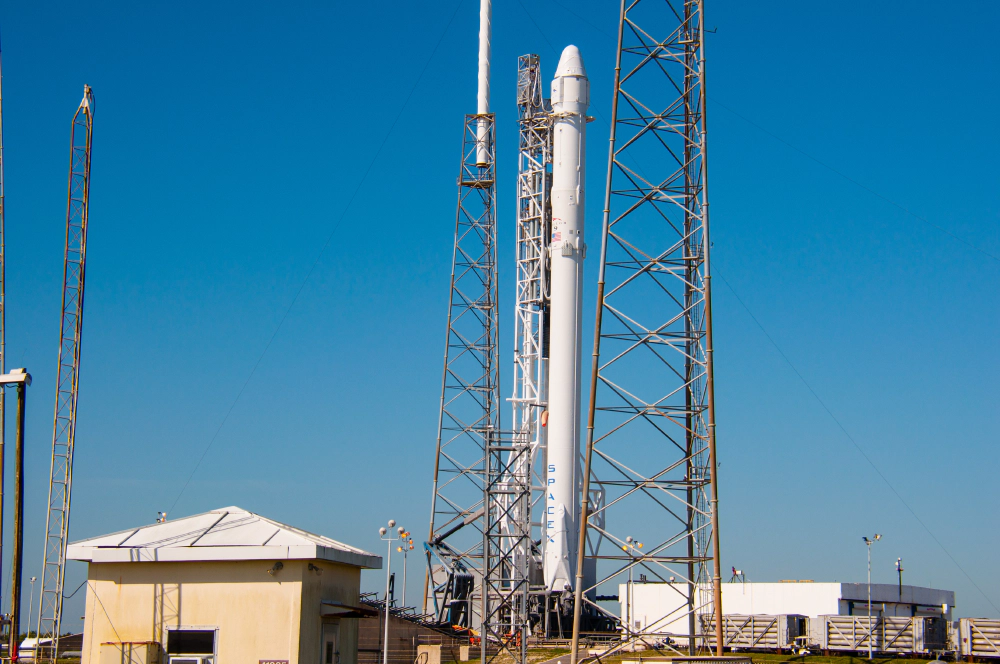
SpaceX Falcon9 at Launch Complex 40

SpaceX Falcon9 at Launch Complex 40
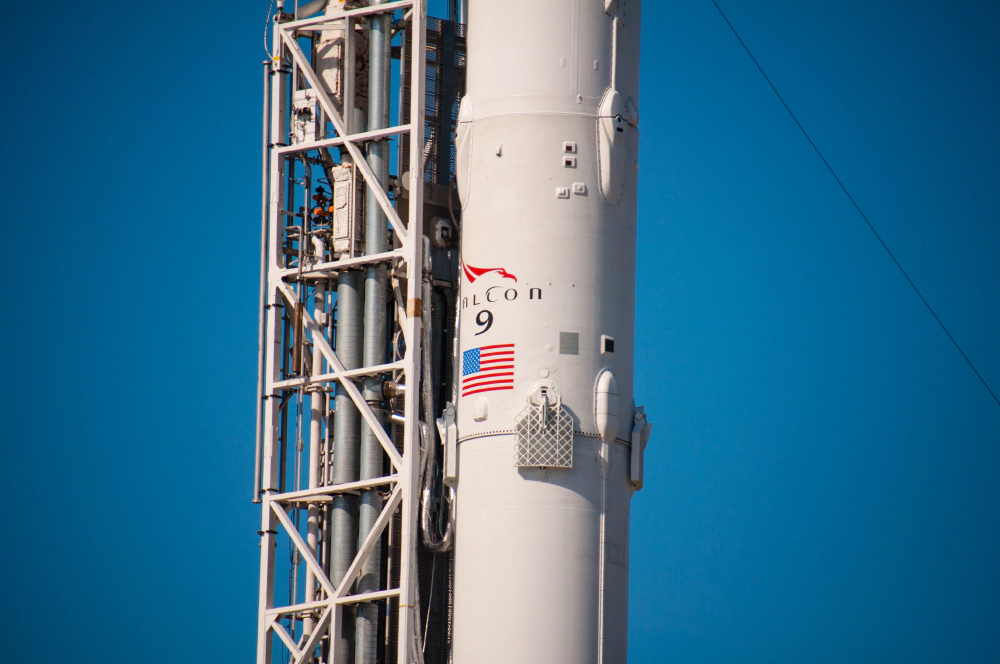
SpaceX Falcon9 at Launch Complex 40

SpaceX Falcon9 at Launch Complex 40
You’ll want to click through and see a few of these shots I got… it was a pretty cool experience.
Vehicle Assembly Building (VAB)
After lunch, we then headed for a tour of the VAB, the biggest building as far as volume is concerned in the world. Pictures do no justice to this place… your eyes don’t even understand what they are seeing. The VAB is over 550’ tall and a great majority of it is open on the inside so you can see all the way up! Here’s a picture showing the ground floor and roof. The yellow crane at the top is capable of lifting over 300 tons… such as the Space Shuttle!
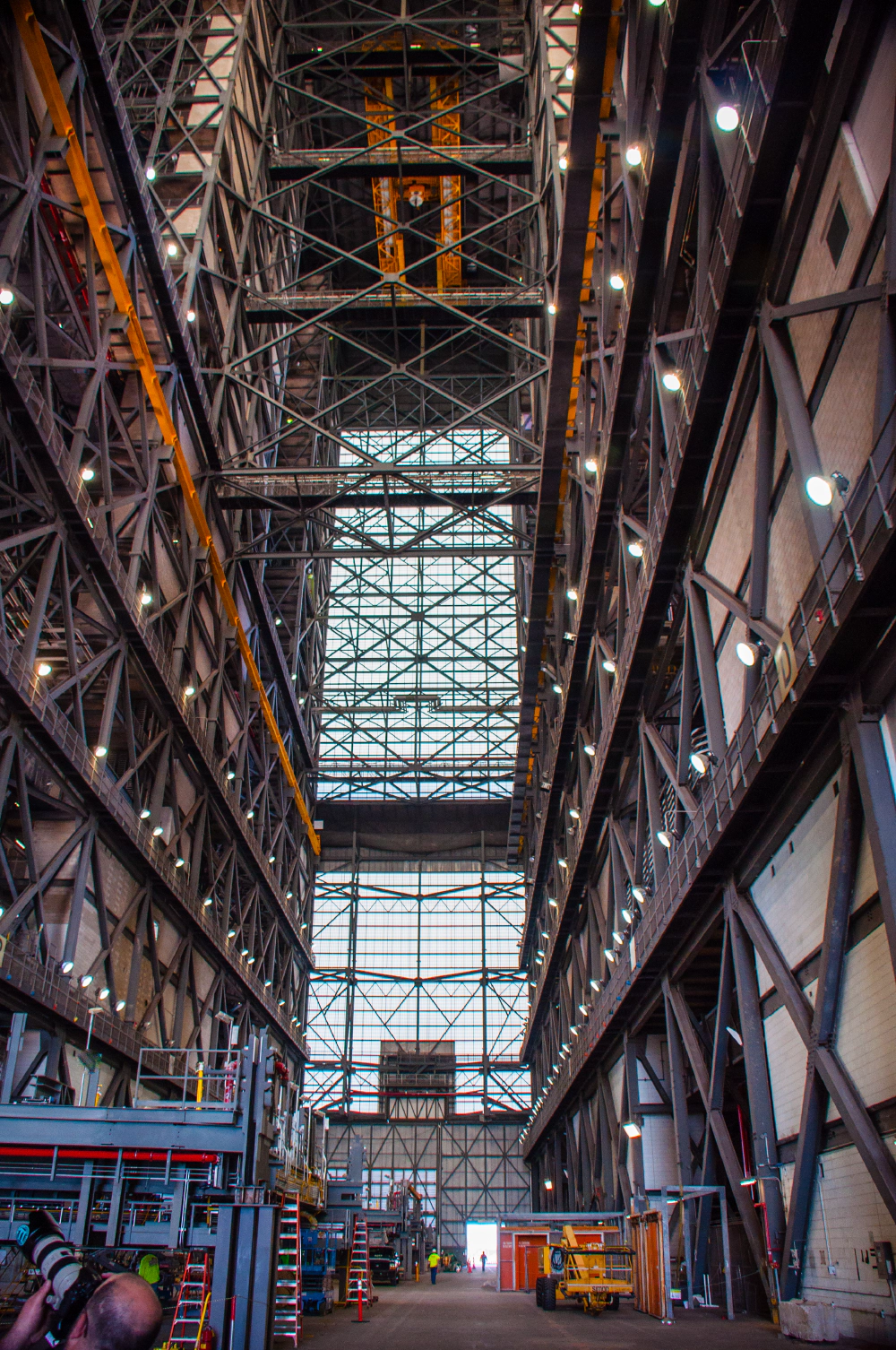
Inside VAB
A few fun facts about the VAB:
- The VAB contains 4 high-bays and 1 low-bay. Things are brought into the low bay, such as the external fuel tank or Space Shuttle. The cranes then lift it up and OVER a gantry-way 16 floors up into a high-bay where the vehicle is assembled!
- There are still mounts from the Apollo program in the low bay.
- Check it out… here’s a killer 10m video of NASA stacking the Space Shuttle discovery for STS-133.
- We even got to see the mockup of the Orion module that will be mounted to SLS on the first test flight in late 2018:
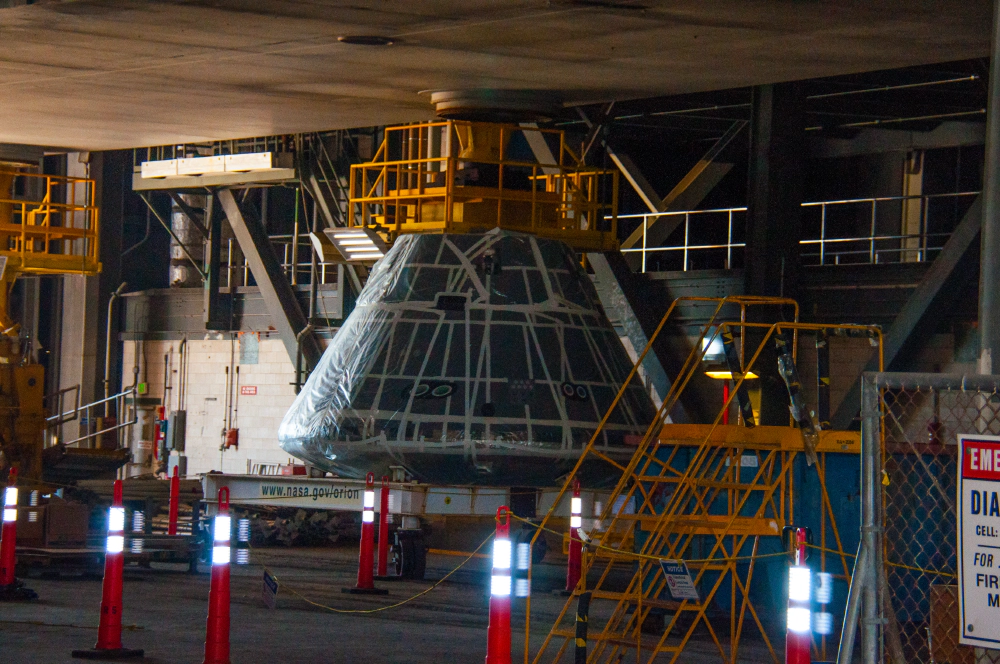
Orion Mockup
Then we got a special treat: to go outside on the roof of the VAB. The view was breathtaking as you can see from the following pictures. Here’s a shot of Launch Pad 39A which is about 3 miles away from us.
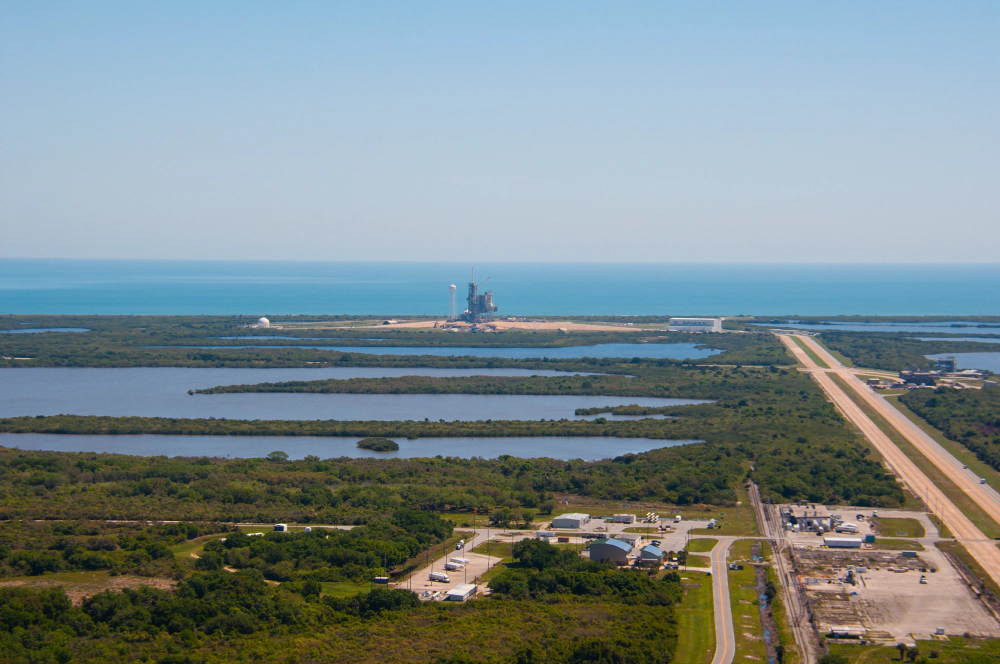
Launch Pad 39A - from roof of VAB
And here’s a picture of Launch Complex 40 where the Falcon9 is waiting to go.
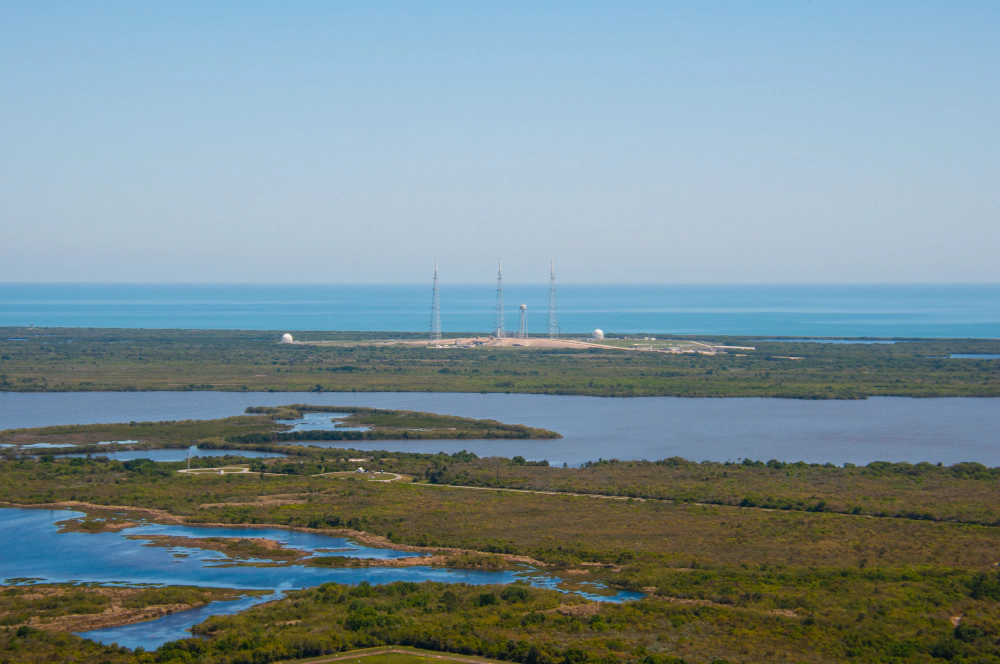
SpaceX Falcon9 at Launch Complex 40 - from roof of VAB
Crawler
Just outside of the VAB sat one of the two crawlers. These massive machines are used to take a vehicle from the VAB to the launch pad. In the Space Shuttle days they would roll into a high-bay within the VAB, have the shuttle, external fuel tank & boosters stacked and then roll out to one of the two launch pads (39B or 39A).
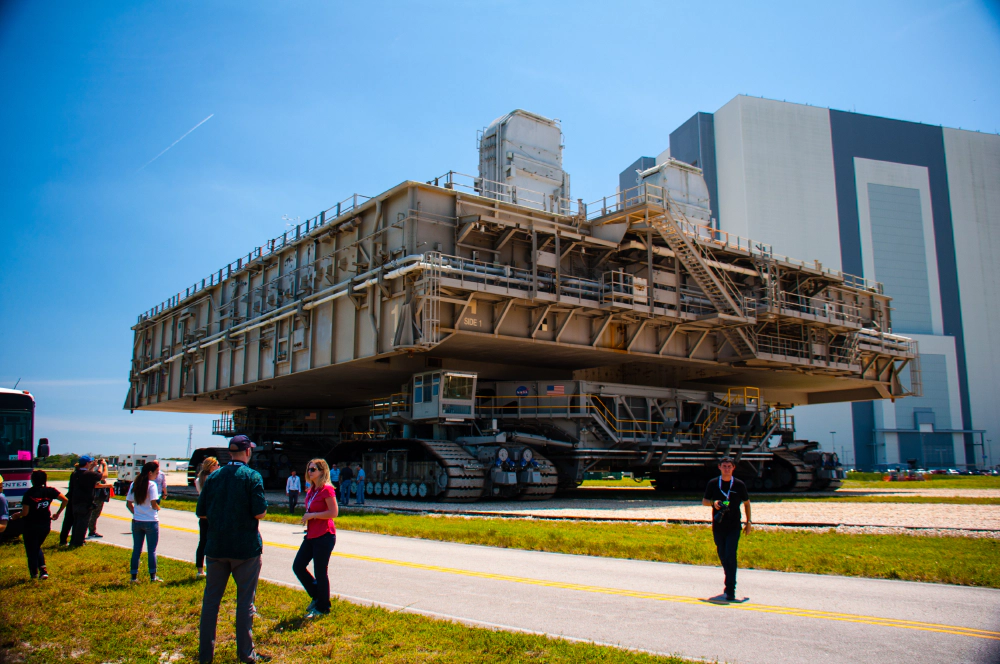
Crawler
It is currently being updated to be able to lift 12M-18M pounds! The crawler already weighs in at 8-9M pounds so just imagine the weight of this thing. It needs to drive under the mobile launch platform where the SLS rocker will be stacked and take it out to the launch pad.

SLS Mobile Launch Platform
Let me get back to something, I said it had to lift 12M - 18M pounds. Why? Because not only must the crawler lower itself under the mobile launch platform, but it must also auto-level itself as it rolls up the slope to the launch pad. It can lift up to 6’ and maintain level platform so the rocket doesn’t tip over on the way up to a margin of 2% from one side to the other side. This is done with 16 hydraulic lifts, 4 on each corner.
This thing is so massive and heavy that when it rolls down the crawler-way (it’s own road) of river rock, it pulverizes the rock into dust… just amazing.
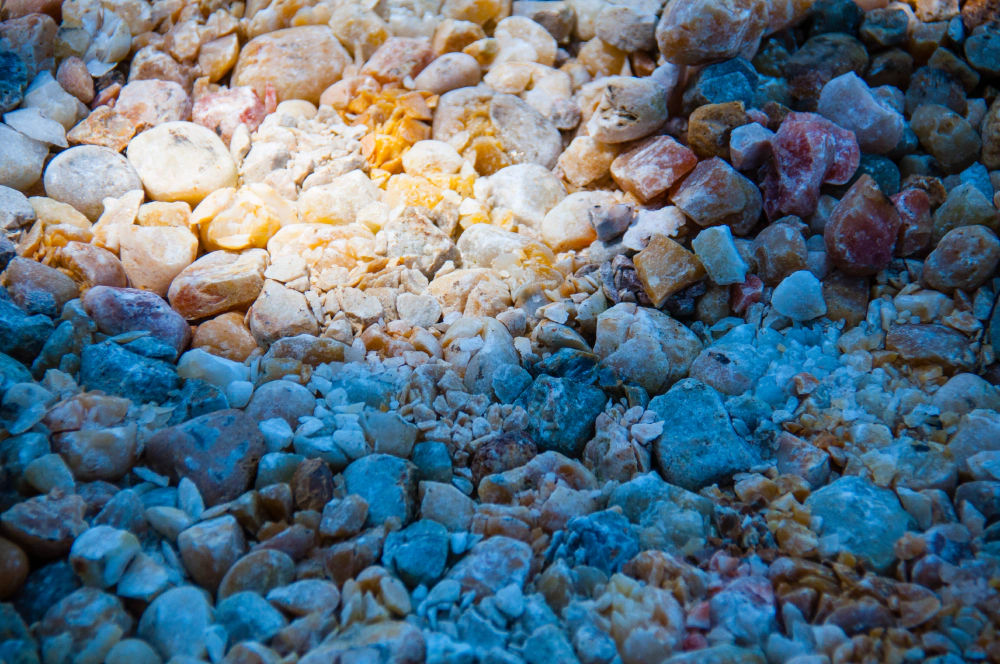
Rock crushed by crawler
We then headed into the press annex one more time to hang out until it was time to head out to the causeway to watch the launch. Before boarding the bus one last time, we stopped for a group photo in front of the countdown clock (*that’s me, right in the middle below the “C” in CRS-8 on the clock:
The #NASASocial group in front of the countdown clock before today's @SpaceX #Dragon cargo launch! pic.twitter.com/AJuGH8KxoK
— NASA Social (@NASASocial) April 8, 2016
Launch
We then headed out to the causeway to watch the launch. This was not open to the public and was about 2 miles south from the launch site. This was cool as using the zoom on my camera we could see ULA stacking a Delta 4 Heavy rocket for a June launch:
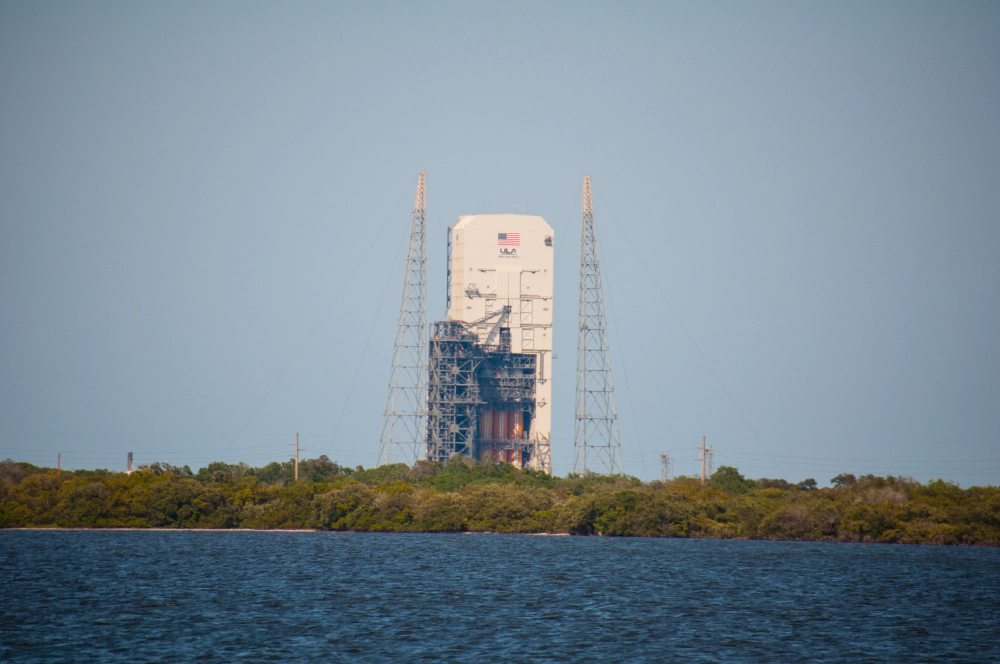
ULA Preparing Delta IV Heavy for June 2016 Launch
And then the big event… the launch. It’s just incredible to see it in person. One guy in our group set up his telescope, with software he wrote, to track the rocket on launch and on the way up. Check out the incredible video here.

SpaceX Launch
No camera zoom
Here’s our view with the naked eye, no zoom:
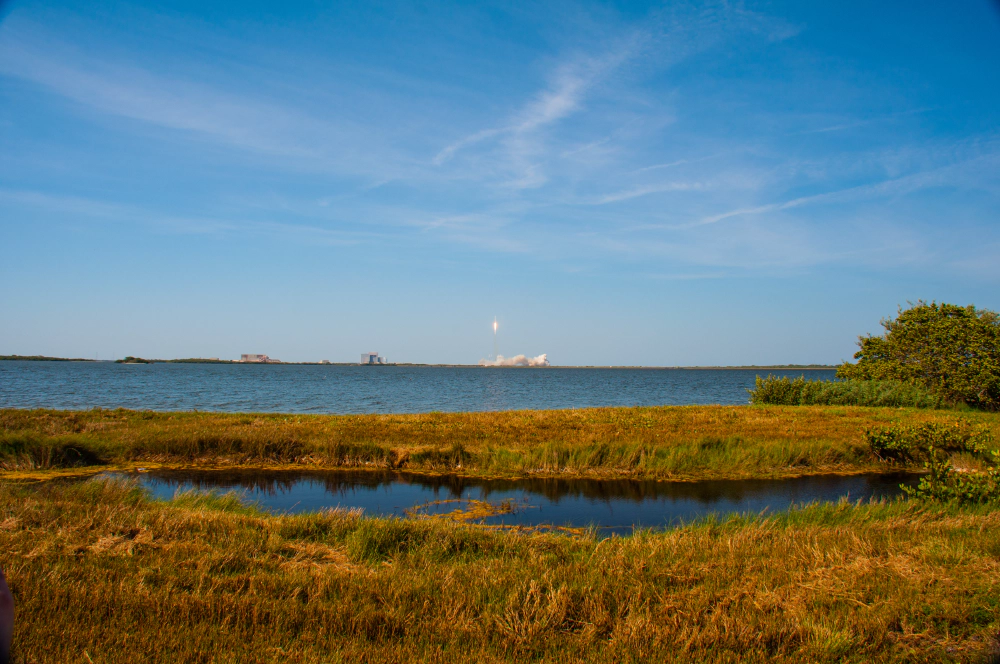
SpaceX Launch
No camera zoom
I had set up my iPad to stream the SpaceX webcast so once it was out of eyesight, we watched the stream to see if they were successful landing on the drone ship. As you know, they did it and we were all thrilled (that’s me in the middle of the group… well… you can see my arm holding my sunglasses up in the air):
@SpaceX @NASASocial group celebrates successful rocket landing on drone ship! @KennedySpaceCtr pic.twitter.com/Jrg7kmPdBQ
— Anne Wainscott, CF APMP (@AnneWainscott) April 9, 2016
Press Conference
After the launch we headed back to the press annex for to wait for the post-mission briefing. Oh what a treat… not only did we get in, but Elon Musk was there and was the highlight of the show. It was awesome to see him answer questions in person.
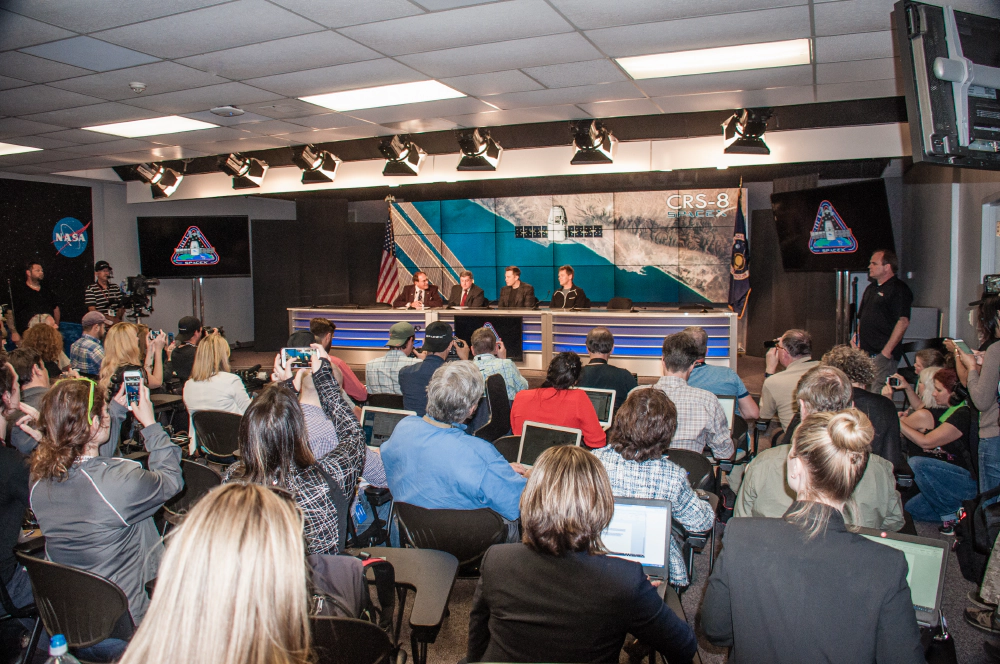
CRS-8 Post Mission Press Conference
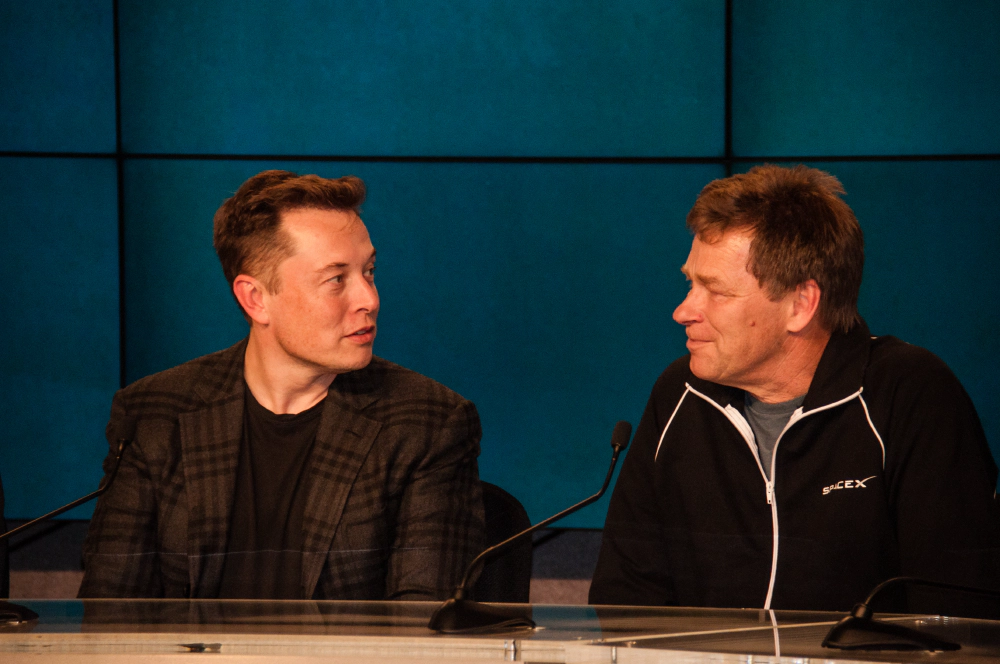
CRS-8 Post Mission Press Conference
What an experience! I can’t wait to do this again some day… I hope NASA Social does this again for the SpaceX Falcon Heavy test flight, the test of the SpaceX Dragon-Crew moule & the SLS launch. I’ll be sure to fill out the application and hope to attend one of those! I am able to get into that one.
A huge thanks to the folks at NASA Social for this. I was very impressed with the event and congratulate their team for a great concept to help get the word out about what’s going on at KSC and NASA!
The NASA Social twitter account set up a list of all the people in our group who are on Twitter. If you’re interested, check this out and jump back in the timeline to April 7-8, 2016 to see the experiences others shared: https://twitter.com/NASASocial/lists/spacex-8-nasa-social/members
